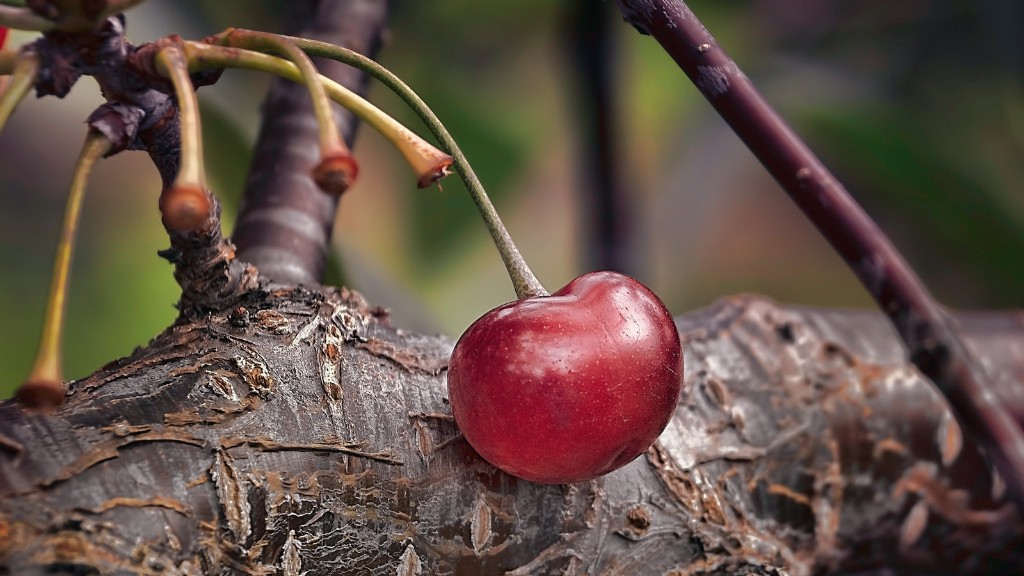Growing a lemon tree successfully at home is a rewarding experience and it’s easier than you think. Lemon trees are cold tolerant and easy to maintain, making them ideal for any green-thumbed gardener. Here’s what you need to do to grow your own lemon tree.
To begin, buy a dwarf lemon tree from your local nursery. It’s important to pick a variety that is adapted to the climate in which you live. If you get a lemon tree that is not suited to your temperature range, the tree will struggle to produce fruit. You’ll also need to pick the right pot or container for your lemon tree. Use a container with at least 18 inches of soil on the sides and make sure it has good drainage.
Plant the lemon tree in well-draining soil; it should get some shade during the hottest part of the day. When planting, be sure to place the graft union or knot at least 1 inch below the soil surface. This will help prevent waterlogging, which is a common problem for lemon trees. Once the tree is planted, water it generously for the first few days and then reduce the frequency of watering until it is established.
To keep your lemon tree healthy, fertilize it every month with a balanced fertilizer. Use natural fertilizers and be careful not to over fertilize, which can cause leaf burn. Additionally, prune the lemon tree throughout the year to keep it in shape and help it produce fruit. Prune lightly, but make sure to remove any dead or diseased branches.
It’s important to monitor your lemon tree regularly for pests and disease. To keep it healthy, remove any dead or yellow leaves and inspect the tree for pests and diseases. If you see any pests or diseases, treat the tree with an appropriate pesticide or fungicide.
Finally, when your lemon tree is ready to bear fruit, enjoy the rewards of your efforts. You can pick the ripened lemons from the tree or let them fall off on their own. Eating fresh lemons from your own tree is a delicious and rewarding experience.
Watering and Fertilizing your Lemon Tree
The key to growing a healthy lemon tree is to provide it with sufficient water and nutrition. The soil should be moist, but not waterlogged, so check the soil frequently and water the tree if the soil feels dry. Water the base of the tree and avoid overhead watering, as this can lead to fungal issues. Additionally, apply a balanced fertilizer once a month to give the tree the nutrition it needs to grow strong.
For lemon trees that are newly planted, water generously to help the tree become established. As the tree matures, reduce the frequency of watering. Aim to water the tree once a week, or when the soil feels dry. Don’t forget to mulch around the base of the tree to help the soil retain moisture.
Fertilizing your lemon tree is also important for its overall health. Use a balanced fertilizer and apply it once a month in the late spring and summer. Use a special citrus fertilizer if available, or a balanced fertilizer with an analysis of 8-8-8 or 10-10-10. Again, be careful not to over fertilizing, which can cause leaf burn.
Prevention and Treatment of Pests and Disease
Lemon trees can be vulnerable to pests and diseases, so it’s important to check the tree regularly and take measures to prevent and treat any issues. Common pests and diseases include black spots on the leaves, which is caused by the disease called black spot. To prevent this, keep the foliage dry. If the leaves are wet for too long, the disease can spread quickly.
To prevent and treat pests and diseases, start by conducting a thorough inspection of your lemon tree. Check for any signs of pests or diseases, and remove any dead or yellow leaves. If you do find pests or diseases, treat them immediately with an appropriate pesticide or fungicide.
It’s important to note that chemical pesticides are not always effective and can be harmful to the environment and your health. Therefore, opt for natural remedies such as insecticidal soap or neem oil. These are safer for the environment and the people who come into contact with the treated lemon tree.
Another way to control pests and diseases on your lemon tree is to use beneficial insects. Ladybugs and lacewings are two beneficial insects that can help keep pests and diseases at bay. They can be purchased from a nursery or garden centre.
Pruning and Training your Lemon Tree
When your lemon tree is established, it’s important to prune it regularly to encourage growth and promote a healthy shape. Pruning should be done throughout the year and removes any dead, damaged or undesired branches. Additionally, pruning helps to open up the canopy of the tree, allowing for more sunlight and air circulation.
When pruning, use sharp, clean pruning shears and remove any dead, damaged or diseased branches. Additionally, it’s a good idea to prune to open up the canopy of the tree, which prevents overcrowding and helps produces better fruit production. Be sure to prune lightly and never cut back more than 25 percent of the tree’s growth.
Another way to promote a healthy shape and good fruit production is to train the lemon tree. This is done by gently guiding the growth of the tree so that it becomes bushier and produces more lemons. To train the tree, use wires or stakes to tie the branches in place and encourage them to grow in the desired direction. Be sure to remove the wires or ties when the desired shape is achieved.
Finally, it’s also important to protect your lemon tree from extreme temperatures. In colder climates, you can cover the tree with frost protection or wrap it in a tarpaulin. In hot countries, use shade cloth to keep the lemon tree from getting scorched from the sun.
Harvesting Lemons from your Tree
When your lemon tree is ready to bear fruit, you can enjoy the rewards of your hard work. Lemons are ripe when they begin to turn yellow, and you can pick them from the tree or let them fall off on their own. When picking lemons, be sure to pick off any that are rotten or diseased, as this can spread to the healthy fruit.
Once you’ve picked the lemons, you can store them at room temperature or place them in the fridge. If the latter, lemons can stay fresh in the fridge for up to two weeks. You can also freeze the lemons or make homemade lemon juice or marmalade.
If you’re looking for a sweet tasting fruit with a range of health benefits, growing a lemon tree is a great way to get your hands on some fresh, sweet lemons at home. With patience and care, you can enjoy the fruits of your labour for many years to come.
Pests and Diseases to Look Out For
Lemon trees are vulnerable to pests and diseases and it’s important to keep an eye out for any problems. The most common pests that can affect the tree include aphids, mites, thrips and scale insects. These pests can weaken a lemon tree, causing stunted growth, reduced yields and other issues. To prevent these pests, spray the tree with appropriate pesticides or natural remedies such as neem oil or insecticidal soap.
Common diseases that can affect lemon trees include black spot, citric acid burn and sooty mold. Black spot is a fungal disease caused by prolonged periods of wet foliage. Citric acid burn is caused by too much nitrogen in the soil and can cause yellowing of the leaves. Sooty mold can cause leaves to turn black and can be caused by the presence of aphids. To treat these diseases, use a fungicide or an organic pest control product.
Finally, you should also be aware of the disease called citrus greening, also known as Huanglongbing. This is a serious bacterial disease that affects citrus fruits and can cause fruit to become bitter and misshapen. To prevent it, use a disease-resistant variety of lemon tree, and avoid using old pruning blades which can spread the bacteria.
Tips for Growing a Healthy Lemon Tree
Growing a healthy lemon tree starts with selecting the right variety for your climate, planting it in a high-quality container and providing it with sufficient water and nutrition. Additionally, it’s important to prune, train and monitor the tree regularly and treat any pests and diseases quickly.
Here are some tips to help you grow a healthier lemon tree:
- Choose a dwarf lemon tree that’s adapted to your climate
- Pick a container with good drainage and at least 18 inches of soil on the sides
- Water the tree generously for the first few days after planting
- Fertilize the tree once a month with a balanced fertilizer
- Prune the tree to keep it in shape and promote fruit production
- Check the tree regularly for pests and disease and treat any issues quickly
- Protect your lemon tree from extreme temperatures
By following these tips, you can enjoy the rewards of growing a healthy lemon tree in your garden.



